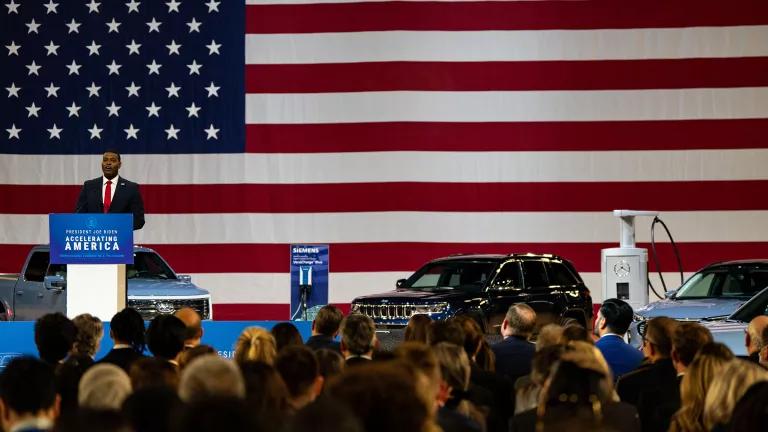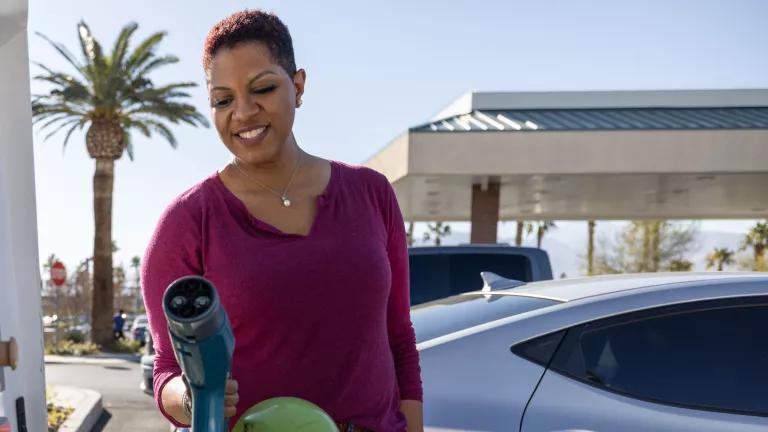Gov Newsom Announces All New Cars Will Be Electric by 2035

The past years of apocalyptic wildfires, record temperatures, choking air pollution, and droughts have made climate change all too real for everyone in the Western U.S. Today, Governor Newsom of California issued the first of a potential series of Executive Orders (EO) and actions to ramp up efforts to fight climate change, starting first with a massive venture to ensure all Californians have options beyond burning fossil fuels in cars, trucks, and buses. The state’s new targets mean all new personal vehicles will be capable of charging on electricity or running on hydrogen by 2035, followed by all commercial trucks and off-road vehicles such as forklifts between 2035 to 2045 depending on the category.
With this announcement, California is poised to become the center of the global clean transportation industry, demonstrating leadership for the rest of the world in addressing climate change. But much more work lies ahead. While the EO lays out a series of important steps to protect community health and facilitate a just transition away from fossil fuels, it’s past time for lawmakers to follow through. Achieving the state’s net-zero goals will also require looking beyond transportation to decarbonize other sectors such as buildings and heavy industry, as well as taking full advantage of the potential of our natural and working lands to act as carbon sinks.
Where the rubber meets the road
The EO prioritizes clean transportation solutions that are accessible to all Californians, particularly those communities that have been most harmed by pollution such as low-income households and communities of color. It also highlights the need for a just transition while ensuring the clean transportation industry supports high-quality and high-road jobs. While these goals are laudable and critical going forward, the state will need to show how the rubber meets the road by developing and implementing an action plan.
Governor Newsom should also sign Assembly Bill 841 (Ting) that accelerates the installation of EV charging infrastructure and ensures underserved communities benefit from those investments. The state is behind on building the charging infrastructure we need to meet our clean vehicle goals. The bill also helps schools repair and replace aging heating, air conditioning, and ventilation (HVAC) systems to reduce energy use and enable schools to reopen safely during COVID-19.
With the costs of electric-drive technologies plummeting, most experts forecast that owning and operating a plug-in electric vehicle will be cheaper for households and truck drivers over the next 2-8 years compared to gasoline- and diesel-powered vehicles. But most low-income households are unable to purchase from new vehicle markets (whether internal combustion engine powered or electric powered) as opposed to the used vehicle market. The EO calls for agencies to identify the actions that will accelerate access to these technologies across markets and to expand micro-mobility options like electric bikes, car-sharing, van and truck rentals, and public transit. Facing unprecedented transit funding cuts from the economic fallout from COVID, the state must redouble its efforts and reinvest in our transit systems as part of CA’s economic recovery.

It can be done
Jurisdictions across the world are charting a course alongside California in setting targets to zero out pollution from transportation. Other states in the West, including Colorado, Oregon, Washington, Nevada, and New Mexico have adopted or intend to adopt zero emission vehicle (ZEV) as well and can also consider similar goals to California. Fifteen states across the U.S. have also agreed to work toward a multi-state action plan to increase zero-emission commercial truck deployment. And Michigan also announced bold climate actions today. Major companies like Walmart have committed to shifting their trucking fleet to electric by 2040 while companies like BMW, Volvo, and Ford are retooling factories to ensure their future models will be capable of plugging-in.
State and federal governments have an enormous role in creating a healthy eco-system for zero-emission transportation. Supportive policies must fast-track charging infrastructure installations via utility-infrastructure programs, develop innovative EV and infrastructure financing mechanisms, and ensure all manufacturers are held to zero emission vehicle requirements that increase consumer access to EVs.
As Governor Newsom remarked today, goals are nothing more than dreams with a deadline. Today’s order sets in motion the strategies California must pursue to drive out pollution from the transportation sector, but the follow through is just as important. As a next step, the state must implement and expand its vision to enable a zero-carbon economy that is healthier, more equitable and grows high-road, family supporting jobs. Together we can build this future.




